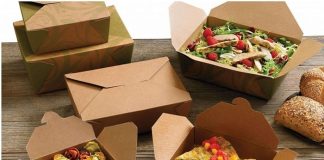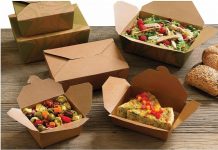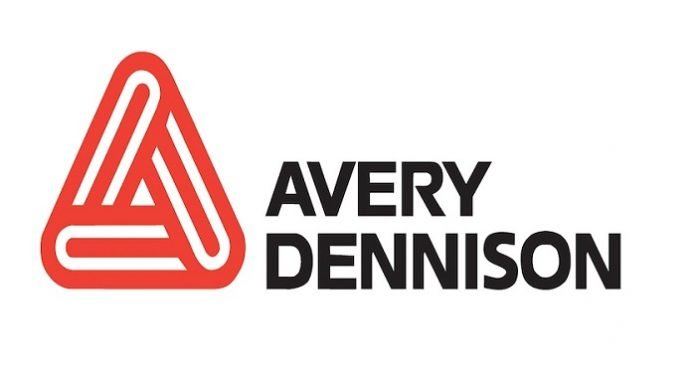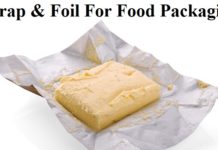In order to better connect with its customers during social distancing, Avery Dennison has scheduled multiple webinars designed to educate the industry on the latest trends. The substrates and adhesives supplier detailed “Consumer Packaging Trends 2020” in the first installment.
Laura Noll, market research manager, and Michelle Bober, market research analyst, explained consumer behavior traits during the COVID-19 pandemic. Many consumers have shifted to products promoting health and wellness – both from a physical, mental, and emotional standpoint.
According to Bober, 57% of consumers want to improve their overall health and well-being, and they’re looking to brands providing total solutions. During lockdown, the public has time to manage stress and focus on their health, which has led to a greater consumption of products that offer long-term benefits.
Therefore, brands need to offer transparency to find success during the pandemic – especially in the label and packaging market. “Consumers are becoming more aware of their products and what goes into them,” said Bober. “With COVID, we’re seeing this trend amplified, as well as the supply chain and where these products are coming from.”
Prior to the coronavirus, 30% of shoppers stated ingredients were impacting their purchasing decisions. That trend has elevated in the past two months.
“People are getting used to the new normal, where they’re retreating from globalization to support their local communities,” noted Bober. “They require more knowledge of where their products come from, and we expect that to continue after COVID-19.”
Not surprisingly, sustainability concerns have taken a temporary backseat in the minds of consumers. With a “Clean Before Green” concept, shoppers are more focused on keeping their pantries stocked and protecting loved ones with clean ingredients. “Unfortunately, that means sustainability takes a hit in the short term,” said Bober.
Even though the CDC said the risk of transmitting the virus through packaging was “very low,” suppliers, converters and consumers are taking precautions. To keep up with increased production, many converters are relying on cardboard, plastic and glass for their packaging.
Prior to COVID-19, the public actively sought refillable bulk bins and containers. That trend has decreased, though, as shoppers prioritize health and safety. Therefore, there has been a surge in single-use plastics.
Bober and Noll noted, however, that sustainability will again become a top priority long term. Consumers are also paying close attention to brands’ responses now. Treatment of brands’ employees and the public, although producing a short-term loss, could gain customer loyalty down the road.
“It’s important for brands not to abandon their goals and protect the environment long term,” said Noll.
In addition to health and safety, convenience has also driven the latest packaging trends. With people avoiding public places, e-commerce is thriving. According to Avery Dennison, e-commerce was expected to account for 8% growth by 2023. The pandemic, however, as seen e-commerce sales surge by over 300% since April. This has necessitated a greater need for tamper-evident labels, which are commonly found with foods, and more delivery services.
“Since COVID, almost every order has some sort of tamper-evident seal because safety is top of mind for consumers,” said Bober. “Over time, we expect these channels to maintain some of their growth as they gain and keep new users.”
The top three e-commerce channels are expected to include grocery, beauty, and at-home fitness. Flexible packaging is seeing growth while craft beers are taking a hit.
“Consumers are buying whatever they can that’s packaged in the safest way,” explained Noll. “Even with produce, there are a lot of stores now putting them into flexible packaging so people aren’t touching the products. People are buying packaging that they wouldn’t have bought previously.”
While it’s hard to predict the future, Noll also noted that 85% of people surveyed said the COVID-19 situation has gotten more serious in the last two weeks.
“I think RFID is going to play a huge role with transparency and the supply chain,” said Bober.
“In the pharma area, RFID is going to be increasingly huge. Pre-COVID reports showed high teens, low 20s growth in different areas using RFID. I think it’s going to be even higher as we go forward,” Noll added.
According to webinar attendees, they have seen increased purchasing in hand sanitizers and hand wipes, as well as an online boom for the pet supply industry. Customers are also asking more questions about compostability, which is an increased area of focus for Avery Dennison. Other areas seeing growth among customers include appliances, floor graphics and signage for stores, and varnishes with anti-microbial properties.
Avery Dennison’s webinars, which can be found on their website, will focus on sustainability and recycling, as well as innovations in paper, in upcoming weeks.























